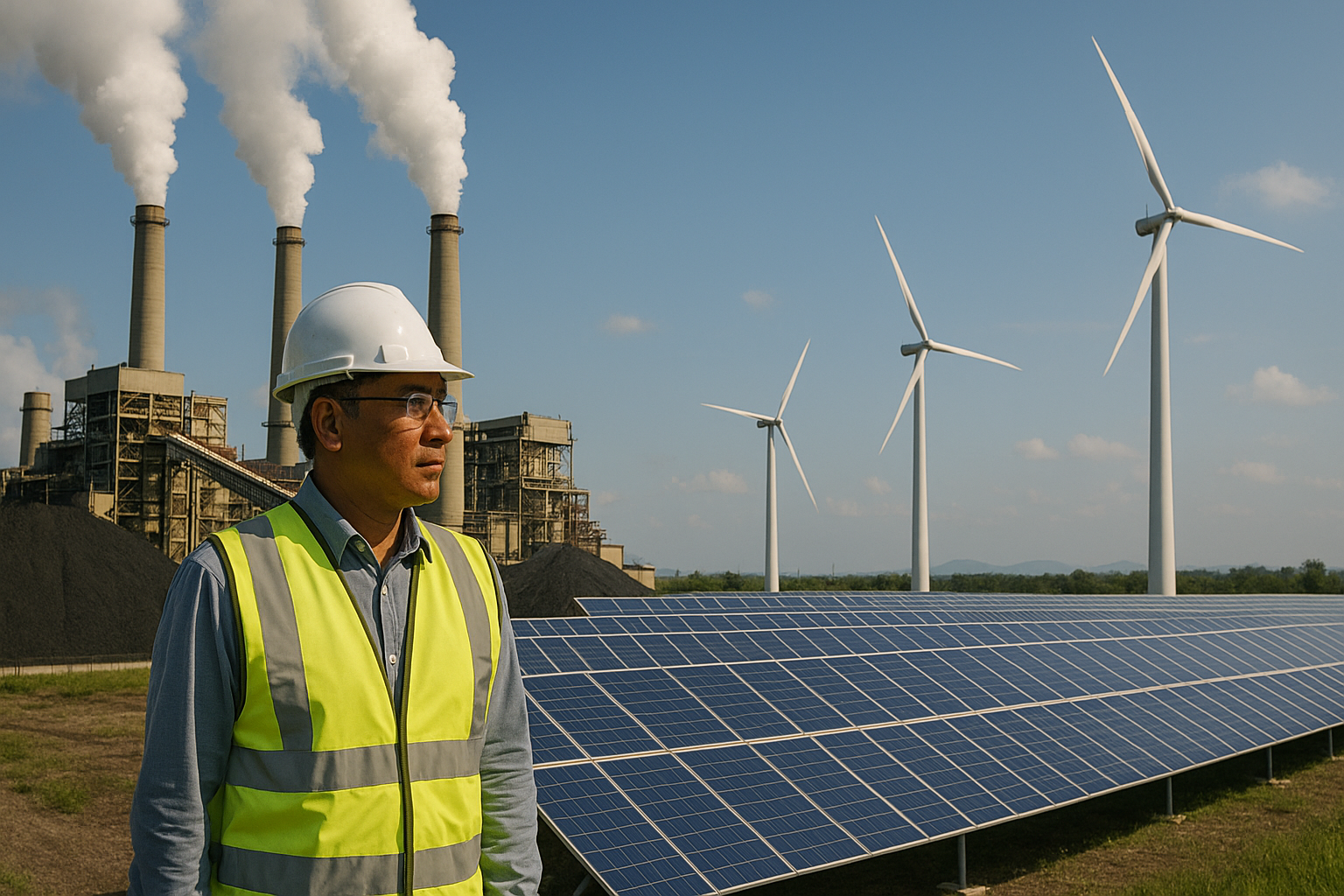From Coal to Clean Energy: Southeast Asia’s Urgent Journey Toward Net-Zero Growth
The report “Decarbonising Southeast Asia” by the Energy Studies Institute, Asia Research Institute, and ASEAN Centre for Energy calls for an urgent yet achievable transition to a low-carbon economy through renewable energy, innovation, and regional cooperation. It argues that decarbonisation is not just an environmental necessity but a powerful economic opportunity for sustainable and inclusive growth.

The report "Decarbonising Southeast Asia", jointly produced by the Energy Studies Institute (ESI) at the National University of Singapore, the Asia Research Institute, and the ASEAN Centre for Energy (ACE), delivers a compelling call to action for the region's transition to a low-carbon economy. Combining rigorous data and policy insight, the study warns that Southeast Asia's rapid growth, driven by industrialisation and urbanisation, has come at the cost of rising emissions and growing vulnerability to climate change. It argues that decarbonisation is not only essential for the planet but critical for the region's long-term economic and social stability.
Rising Risks and Economic Stakes
Energy demand in Southeast Asia has tripled since 1990, and coal remains the backbone of electricity generation, particularly in Indonesia, Vietnam, and the Philippines. Fossil fuels still account for more than 80 percent of the region's energy mix, and without intervention, emissions could double by 2040. The report highlights that climate impacts such as flooding, heatwaves, and rising sea levels already inflict economic losses of up to 5 percent of GDP in some countries. These disruptions threaten livelihoods, deepen inequality, and could reverse decades of development gains. Yet, amid the risks lies opportunity. The report insists that clean energy investment can spark new growth, creating jobs, stimulating innovation, and enhancing energy security.
The Promise of a Green Economy
Transitioning to low-carbon systems could generate trillions of dollars in net economic gains by mid-century. The authors emphasise that renewable energy, green manufacturing, and sustainable mobility are becoming powerful drivers of competitiveness. Foreign investors increasingly prefer economies with credible decarbonisation strategies, suggesting that climate ambition now shapes trade and investment flows. Each dollar channelled into renewable infrastructure, they note, can yield several times that value in social and economic returns. Southeast Asia, strategically located and rich in resources, could become a global hub for clean technology, from solar equipment production to electric vehicles and digital energy services.
Pathways and National Efforts
The report presents three possible futures: business as usual, accelerated transition, and net-zero by 2050. The first sees emissions rising sharply, while the second achieves partial stabilisation. The net-zero scenario, viewed as both feasible and beneficial, envisions renewables meeting 65 percent of electricity demand by 2050, supported by modern grids and regional power trading through the ASEAN Power Grid. Coal phase-out, large-scale solar and wind projects, and the adoption of carbon-capture technologies form the foundation of this vision.
Country analyses reveal contrasting progress. Indonesia's coal dependence makes it central to the region's energy story; despite commitments to peak emissions by 2030 and achieve net zero by 2060, policy gaps and financing shortfalls persist. Vietnam's rapid renewable boom, solar and wind capacity grew twenty-fold from 2018 to 2022, but has been hindered by grid bottlenecks. Thailand and the Philippines are focusing on electric mobility and efficiency improvements, while Malaysia is positioning itself as a green-finance leader. Singapore's carbon tax and innovation ecosystem are praised as models for policy coherence and technological leadership.
Financing and Social Transition
Achieving a net-zero trajectory will require over US$210 billion in annual investment, the report estimates. To bridge this financing gap, it calls for blended finance, green bonds, carbon pricing, and the removal of fossil-fuel subsidies. Redirecting these subsidies toward renewables and social protection could ensure a fair and inclusive transition. The study warns that without social safeguards, the energy shift could displace workers in fossil industries and burden vulnerable communities. However, modelling shows that renewable energy expansion can create more than twice the number of jobs lost, if governments invest in retraining, education, and social protection. Cleaner air, reduced healthcare costs, and biodiversity preservation could add further benefits, equivalent to 3 percent of GDP.
Governance, Innovation, and the Road Ahead
The authors emphasise that effective governance, innovation, and cooperation will determine success. Transparent institutions, reliable data systems, and coordinated ASEAN policies are key. International partnerships will also be vital; Japan's support for hydrogen and the European Union's carbon-border measures are seen as opportunities and challenges alike. Digitalisation, artificial intelligence, and smart infrastructure are identified as tools to optimise energy systems and track progress.
The report delivers a clear message: the region stands at a defining crossroads. With coordinated policies, financial innovation, and social inclusion, Southeast Asia can turn its carbon challenge into a growth revolution. The report envisions a future where sustainability and prosperity are not opposing goals but two sides of the same regional ambition, to secure a resilient, green, and equitable tomorrow.
- FIRST PUBLISHED IN:
- Devdiscourse
ALSO READ
-
Adani Green Energy's Ambitious Expansion: Setting Global Benchmarks in Renewable Energy
-
Smart Grid Analytics Secures $3.3M to Revolutionize Renewable Energy Integration
-
Renewable Energy Surpasses Coal: A Milestone in Solar Power
-
Germany and India Forge Stronger Renewable Energy Ties at Chennai Wind Fair
-
Saudi Arabia Powers Ahead with Massive Renewable Energy Projects









